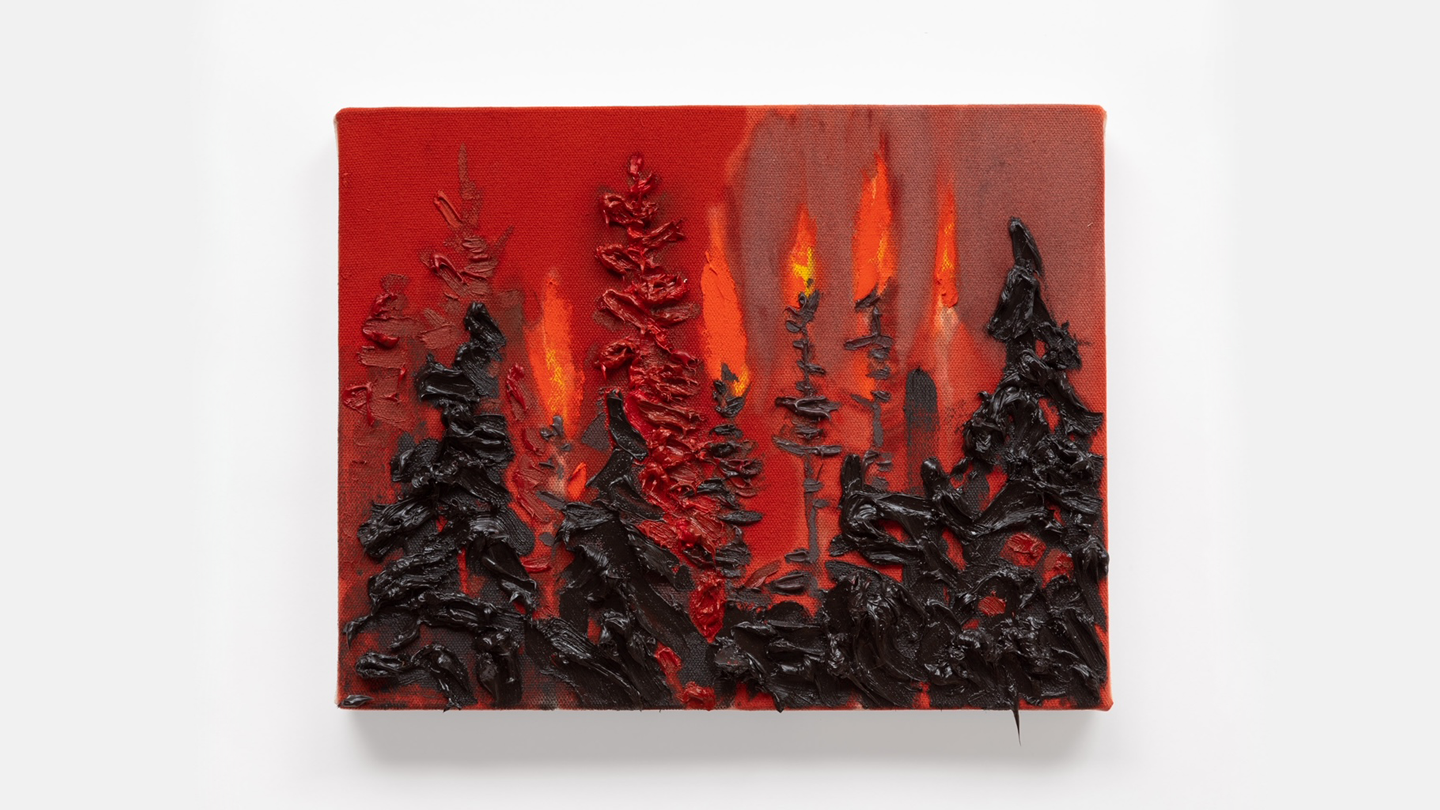TreePeople is interviewing artists that are actively trying to bring people into the environmental movement through their art. This series includes musicians, visual artists, poets and more.
Toronto’s Kim Dorland is one of the most forward thinking artists today when it comes to showcasing the wonders of our forests. His inventive brush work and detailed layering takes his memories of Western Canada and makes them jump off the page. TreePeople sat down with Kim on the occasion of an exhibition in Los Angeles to talk about his connection to nature.
Dorland has created an edition that benefits TreePeople. Visit the exhibition at Five Car Garage or email info@emmagrayhq.com for more information about the print.
TreePeople: How did your personal connection to nature come to develop?
Kim Dorland: I’m Canadian and grew up in small towns in Western Canada where you’re never far from wilderness. A lot of time is spent heroizing Canadian landscape imagery and artists. Plus, nature is like a national pastime here – camping, cottaging. You kind of can’t avoid it.
TP: Were there any formative moments in that relationship that you’ve taken into your artistic process?
KD: The feeling of being in the woods or near the woods has informed a lot of my work. It’s a very powerful “psychology” for me and a stand-in for contemporary anxiety, lonlieness, etc.
TP: Trees and forests are a recurring presence in your work. What are the powers that trees have and what can we learn from them?
KD: I’ve used trees in different ways in my paintings – the set a scene, or a tone/psychology. I’ve also focused in more closely on individual trees or groups of trees, sort of like portraits. I like to think of trees as witnesses – they were here before us, “watched” us evolve and unravel, and will probably be here long after we’re gone.
TP: How has human-kind’s fractured bond with the natural world influenced your work?
KD: Like I said there is a long history of landscape art in Canada. They were my first influences as an artist, and continue to be important to me. They were important to Canadians because they observed and reflected back to us the natural world around us at that time. In my time nature looks different. In a lot of ways we have lost touch with it, or changed it for purposes of human consumption. It’s important to me to reflect that.
TP: What is the relationship between texture and memory in your work?
KD: Painting is expression for me. I need the painting to “feel” right before I’m done with it. I can render a perfectly accurate and realistic image of a tree, but that really doesn’t interest me. For me, piling on paint is often how I render the feeling or psychology of nature/trees.
TP: Fire and destruction are prominent subjects in your painting. Do you think of them more as something final or as the start of something new?
KD: Fire is a newer theme for me. As a landscape painter, I feel like it would be irresponsible to just paint “pretty” pictures of nature, given our new realities. I don’t necessarily think of fire metaphorically as destructive or regenerative, it’s more like observation.

